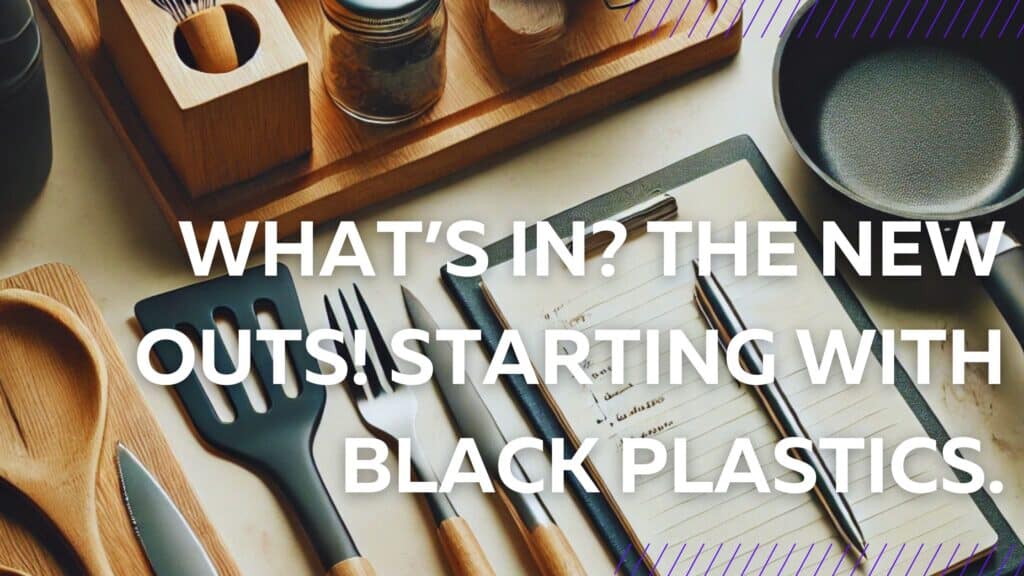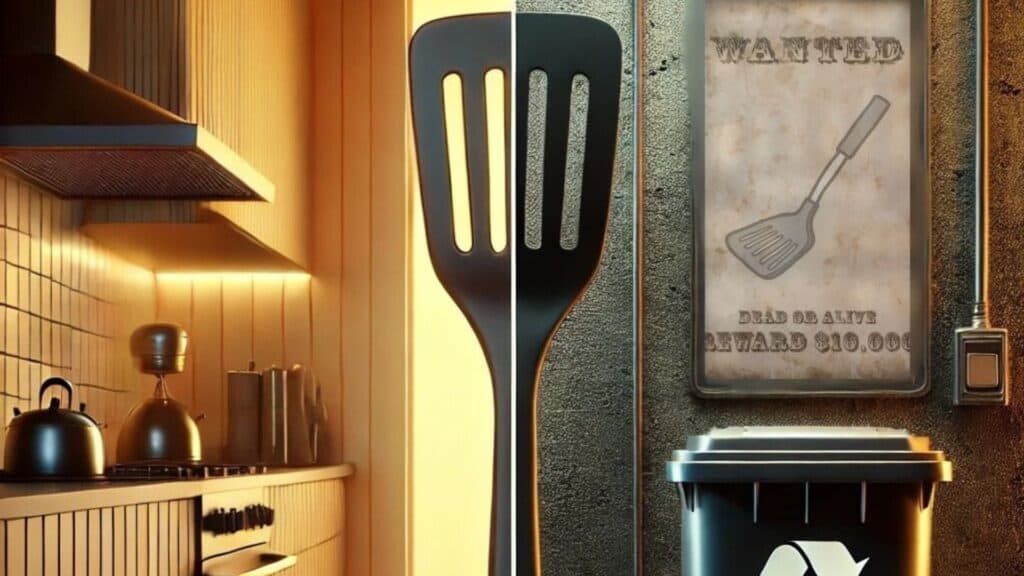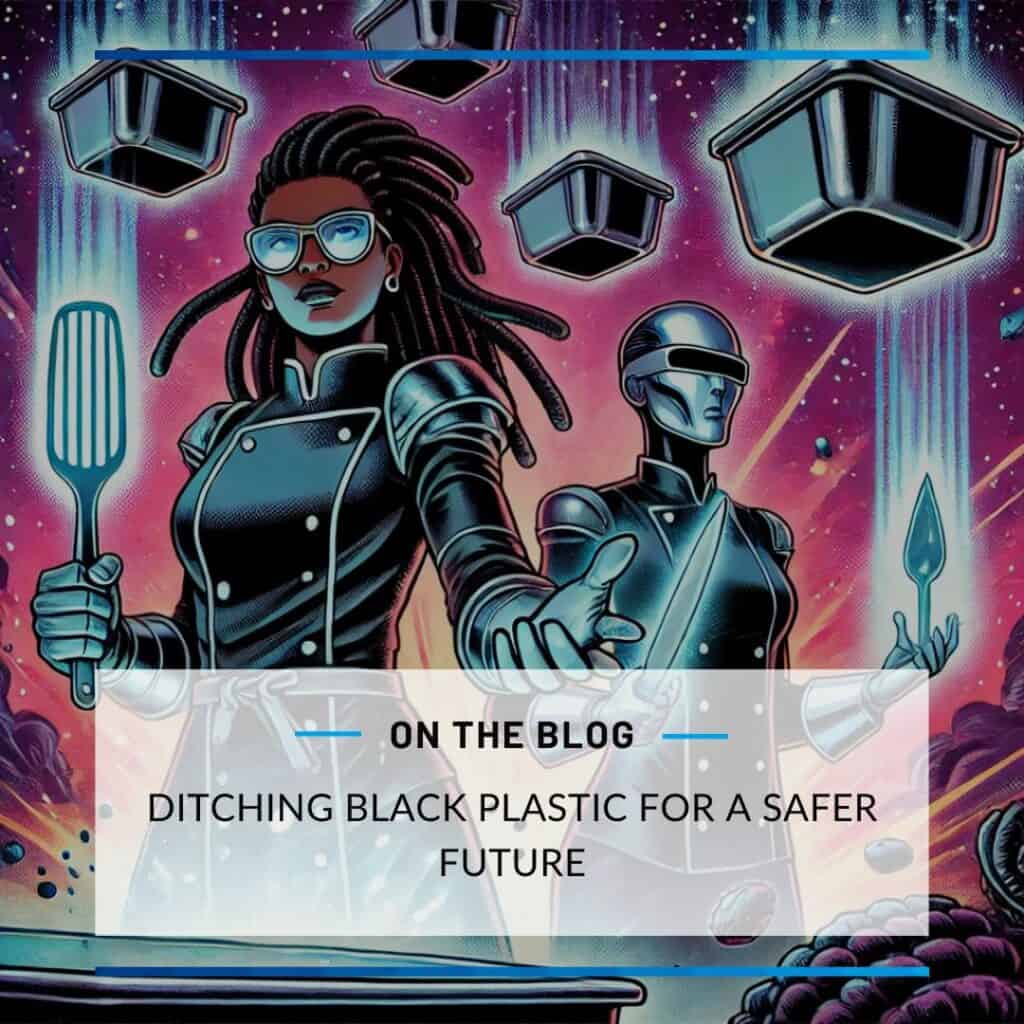Black Plastic in Food: Toxic or Overblown Panic? ⚠️

Have you recently panicked over black plastic in your kitchen? If you’ve considered ditching your favorite spatula because of recent headlines, you’re not alone. A recent study published in Chemosphere claims that 85% of tested black plastic items contain toxic flame retardants. But does this mean it’s time to toss your utensils and embrace stainless steel? Are black plastic utensils toxic? Let’s get into the facts with a side of sass. After all, informed choices start with smart research.
What’s your take? Are black plastics a real concern or just another media scare? Are black plastic utensils toxic? Drop your thoughts in the comments below—I’m all ears (and black spatulas)!
Suggested Read: Growth Culinary’s 8 Core Values: A Recipe for Success
Black Plastic 101: Why the Hype?

Black plastic is everywhere: spatulas, sushi containers, and even toys. Researchers found flame retardants—potentially harmful chemicals—in many black plastic items. Why? These materials often come from recycled electronic waste, where flame retardants are a necessity. But in your kitchen? Not so much. Are black plastic utensils toxic enough to worry about? The thought of unwanted chemicals leaching into food is unsettling, but hold on—let’s not light the metaphorical fire just yet.
Think Like a Scientist
Here’s the thing: scientists don’t just drop conclusions like garnish on a plate. It was drilled into our heads back in my behavior science college courses days that we have to experiment—again and again—to validate our findings. If you’re worried about your kitchen tools, I suggest you channel your inner scientist:
- Research independently and know their sources.
- In other words, do your own research and make sure it comes from reputable sources who aren’t paid by the company with repeatable, validated findings.
- Look at numbers and peer-reviewed studies.
- Numbers can tell a lot, but people can and sometimes will manipulate numbers to validate their findings, this is why you need peers who do the study to validate it or criticize it if it’s missing certain factors.
- Avoid knee-jerk reactions to media headlines.
- Depending on the media’s philosophy or marketing goals, most just want views and will use “click baits” to get it by leaving certain information out that a true scientist would not. Often, it feels like some media outlets (e.g., news sites to TikTokers) only look at the outcome or the abstract that summarizes the study and do not analyze the entire research process the way a professional researcher would.
Case in point: Joe Schwarcz from McGill University pointed out a mathematical error in the study. The researchers had calculated exposure levels to flame retardants as dangerously close to the safety limit—but it turns out the actual risk is about one-tenth of what they claimed. 👀
Does this mean black plastic is totally safe? Not necessarily. But it’s a smaller risk than initially reported. Are black plastic utensils toxic? The answer seems to be nuanced. That’s an important factor to know and why scientists and practitioners analyze risk to see if the benefits outweigh the risks before making a decision.

Managing Risk in a Chemical World
Our environment is filled with chemicals—some good, some bad. Achieving a toxin-free kitchen is about as realistic as turning water into wine. But you can make smarter choices:
- Replace black plastic utensils with stainless steel, wood, or ceramic alternatives.
- Avoid prolonged contact between black plastic and hot food.
- Research your go-to brands and check for safety certifications.
It’s about balancing risks. ⚖️ Not every chemical exposure warrants a kitchen purge, but informed decisions keep unnecessary risks at bay.
The Bigger Picture: Plastics and the Planet
Switching out your spatula is one thing, but let’s not forget the bigger issue: plastic waste. Recycling black plastic is notoriously difficult because its dark pigments resist sorting technology. Manufacturers often use low-quality recycled materials, which can introduce unwanted chemicals into our kitchen tools. Are black plastic utensils toxic in this context? While eliminating plastic entirely isn’t realistic, we can:
- Push for better recycling practices. ♻️
- Support brands committed to sustainable packaging.
- Reduce single-use plastics in our daily lives, which is why most of the tools I choose are multifunctional.
Your Call to Action ⚠️
So, should you toss out all your black plastic? Probably not. But stay informed, make thoughtful changes, and, most importantly, don’t fall for every media headline. Life’s too short to live in constant panic over your spatula. Are black plastic utensils toxic? The jury might still be out, but caution is always wise. But at the end of the day, it’s up to you and what you want to do.
Besides black plastic in food, what’s the most surprising kitchen safety myth you’ve encountered? I would love to hear them; share your stories in the comments, and let’s learn together!

Chef Maika Frederic
Owner, Growth CulinaryChef Maika, founder of Growth Culinary LLC, leverages her expertise as a culinary entrepreneur to power innovative brands like Just Maika Cooking and Custom Herb Spice Shop while sharing insights on culinary trends and entrepreneurial challenges. Read more about Chef Maika.



What about the black plastic containers for soup.
Hi Paulette! While research on black plastic food containers is still emerging, I recommend avoiding them, especially in professional settings where consumer safety is a priority. Glass containers are the best choice, followed by clear plastic options. Interestingly, a supplier I previously sourced black meal prep containers from has now switched to gray containers, which you might notice in my meal prep photos. For takeout, deli cups are a safer alternative, even if they compromise slightly on presentation.